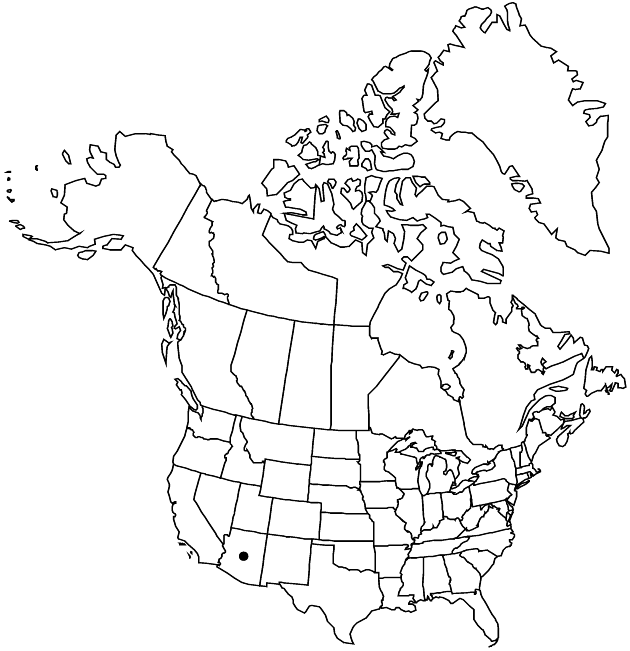Ericameria arizonica
Sida 21: 1558, fig. 1. 2005.
Plants 20–50 cm. Stems erect to spreading, reddish tan, becoming darker, branched, short-stipitate-glandular, usually resinous. Leaves ascending to spreading; blades elliptic to narrowly oblanceolate (flat or somewhat concave adaxially), 10–35 × 2–5 mm, midnerves evident (often with 1–2 fainter, collateral veins), apices acute, apiculate, faces short-stipitate-glandular, usually gland-dotted; axillary fascicles absent. Heads in cymiform arrays (to 4 cm wide). Peduncles 1–10 mm (bracts 1–5, resembling phyllaries, stipitate-glandular). Involucres obconic, 5.5–7.5 × 2.5–4 mm. Phyllaries 30–40 in 4–5 series, tan, lanceolate to elliptic, 2–7 × 0.5–1.2 mm, strongly unequal, mostly chartaceous (bodies abruptly constricted at bases of appendages), midnerves faint, (margins membranous, sparsely ciliate apically), apices (usually recurved) usually acute to cuspidate, sometimes long-acuminate, abaxial faces glabrate, often gland-dotted. Ray-florets 1–8; laminae elliptic, 3–4 × 0.8–1.3 mm. Disc-florets 5–15; corollas 5–7 mm. Cypselae usually tan, sometimes reddish, narrowly obconic, 4–5.5 mm, glabrous or densely sericeous; pappi whitish tan, 4–5.5 mm.
Phenology: Flowering fall.
Habitat: Rock faces, cracks, and crevices and stony soils, usually on limestone
Elevation: ca. 2100 m
Discussion
Of conservation concern.
Ericameria arizonica grows in the Grand Canyon.
Selected References
None.
Lower Taxa
"fine" is not a number.
